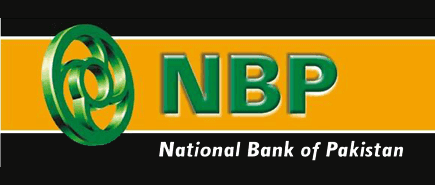National Bank of Pakistan Limited – Organziational and Managerial Report
National Bank of Pakistan Limited is the largest bank in Pakistan. Underlying Organziational and Managerial Report focuses on areas such as debt, non-performing loans and downsizing.
2%NON-PERFORMiNG LOANS (nPLs)
A COMPARISON BETWEEN HBL AND OTHER INSTITUTIONS
| FINANCIAL INSTITUTION | BAD DEBT PORTFOLIO
(As on December 15th, 1999) |
| HBL | Rs 44 billion |
| NBP | Rs 24 billion |
| UBL | Rs 22 billion |
| IDBP | Rs 14 billion |
| ADBP | Rs 9 billion |
REASONS ATTRIBUTABLE TO THE HUGE NPL PORTFOLIO
1. Political and bureaucratic pressures
After nationalization HBL came directly under government control. To a very large extent heavy accumulation of Non-performing Loans is attributable to the misuse of the Bank by successive governments after nationalization as instrument of political patronage for conferring unjustified political favors on certain influential individuals.
2. Project financing
Since the early 1990s HBL expanded its loans and advances from short and medium term loans to long term financing of large industrial projects, which obviously pose greater risk due to the bank due to their uncertain and often negative returns.
3. Poor initial appraisal of loan requests
Credit management has unfortunately not been of high quality. Credit analysts and decision makers at HBL were not equipped with latest techniques and tools of financial analysis and interpretation.
4. Lack of follow-up on loans
Credit was not adequately monitored after disbursement and warning signals were not picked up in time for remedial measures.
5. Imperfect legal system
An inadequate legal and judicial framework, that encouraged blatant misuse of the financial system by unscrupulous borrowers who adopted various delaying techniques to save themselves from accountability.
6. Absence of accountability for defaulters
Until now all steps taken by successive governments to grab the defaulters have been fruitless. Several times have they received their “last chance to clear their debts” yet they have continued to ignore it. Even with the stringent measures announced by the present government the response seems muted.
7. Incompetent bank employees
Banks employees are not trained in the latest methods of credit analysis and management. They have failed to recognize unviable projects or did not carry thorough investigations before extending loans.
8. Absence of accountability of bank employees
While National Accountability Bureau (NAB) is now pursuing the defaulters of large bank loans, no banker who gave those loans has been punished or even questioned.
9. Poor control of SBP
Prior to 1997, SBP was merely a figurehead central banking institution having virtually no say in how banks conducted their operations. Even after 1997, while it insists that banks follow the Prudential Regulations strictly, it has yet to carefully monitor the functioning of the banks.
LOAN RECOVERY BY MAJOR BANKS, BY NOV 16TH 1999
| BANK | NPL PORTFOLIO | CASH RECOVERY | RESTRUCTURED LOANS |
| HBL | 44 billion | 1.629 billion | 5 billion |
| NBP | 24 billion | 915 million | 5 billion |
| MCB | 9 billion | 1 billion | 2 billion |
| UBL | 22 billion | 850 million | 1.3 billion |
| ABP | 10 billion | 800 million | N/a |
RESTRUCTURED LOANS
HBL has regularized some of the loans at an average down payment of 15%-25% with the balance of the loan repayable up to 3 months to 2 years depending on the merit of the borrower.
The payments of these restructured loans are received either monthly or quarterly and are allowed against securities.
EFFECTS of the npl portfolio
The huge NPL portfolio has resulted in uncountable problems for the bank. The frustrating feature is that despite measures taken by the management, recovery has not been adequate or fast. Among several problems posed by this situation, some are:
1. Lower return on assets
2. Lower rates on deposits
3. Lower financial savings
4. Constraint in expanding credit facilities
5. Loss to the bank
6. Loss to economy
Solution
RTC
Case-to-case study
Out-of-court settlement
BALANCE SHEET
(Rupees ’000)
| 1999 | 1998 | |
ASSETS |
||
| Cash | 22,726,139 | 20,543,868 |
| Balances with other banks | 20,470,125 | 20,232,569 |
| Money at call & short notice | 2,713,117 | 1,414,198 |
| Investments | 64,615,598 | 71,020,403 |
| *Loans and advances | 153,890,845 | 136,814,324 |
| Operating fixed assets | 5,690,582 | 5,523,401 |
| Capital work in progress | 462,823 | 459,312 |
| Net investment in finance lease | 32,382 | 28,530 |
| Other assets | 34,365,876 | 33,744,157 |
| 304,967,487 | 289,780,762 | |
| LIABILITIES | ||
| *Deposits | 251,779,188 | 239,055,416 |
| *Borrowings from other banks | 31,350,670 | 19,214,501 |
| Bills payable | 5,611,698 | 6,024,517 |
| Other Liabilities | 11,944,724 | 12,498,437 |
| 300,736,280 | 276,792,871 | |
| Net assets | 4,231,207 | 12,987,891 |
| REPRESENTED BY | ||
| Share capital | 12,718,495 | 12,718,495 |
| Reserve fund & other reserves | 6,173,534 | 6,021,095 |
| Accumulated loss | (17,934,389) | (9,060,224) |
| *Shareholders’ equity | 417,640 | 9,139,366 |
| Surplus on revaluation of fixed assets | 3,813,567 | 3,848,525 |
| 4,231,207 | 12,897,891 | |
BREAK-UP OF LOANS AND ADVANCES
| 1999 | 1998 | |
| Loans, cash, credits, overdraft, etc. | 163,143,422 | 144,657,336 |
| Bills discounted and purchased | 17,661,846 | 15,205,976 |
| 180,805,268 | 159,863,312 | |
| Provisions against non-performing loans | (26,914,423) | (23,048,988) |
| Net | 153,890,845 | 136,814,324 |
Loans and advances include Rs. 58,393 million (1998: Rs 48,011 million) which have been placed on non-performing status.
These non-performing loans also include government-guaranteed debts of Rs. 508.02 million (1998: Rs. 1,359 million).
BREAK-UP OF DEPOSITS
| 1999 | 1998 | |
| Fixed deposits | 77,107,508 | 72,311,009 |
| Savings deposits | 122,184,027 | 109,850,404 |
| Current accounts | 40,563,829 | 39,865,909 |
| Deposits and accounts of other banks | 11,923,824 | 14,408,094 |
| 251,779,188 | 239,055,416 | |
*Items marked with an asterisk show the greatest variance therefore they have been discussed in greater detail in the next few pages.
OTHER FACTORS
Freezing of FCAs
Lack of business development planning
Lack of research and innovation of products
Heavy administrative cost
High rates of taxation
58 as opposed to 45 for other companies
Mismanagement
CHANGES BEING INTRODUCED
RELATIONSHIP BANKING
Credit for Small borrowers
PRIVATISATION
WHY PRIVATISATION
Pakistan is one of those countries where IMF and World Bank policies towards Structural Adjustment Programme and other strategies are being implemented. The most controversial and debatable of these policies is Privatization of State-Owned Enterprises (SOEs).
The objectives of Privatization are:
- To make available the much-needed cash from investors
- To improve the working of the bank
FACTORS RESPONSIBLE FOR DELAY IN PRIVATISATION OF HBL
In 1991 the government made public its decision to privatize Habib Bank Ltd and other SOEs.
RISKS POSED BY PRIVATIZATION
As there do not exist large parties in the country who can legitimately qualify for purchasing the bank.
OPTIONS
Sell on, as is where is basis
Sell after bad debts have been recovered
Establishment of Resolution Trust Corporation (RTC)
The RTC would first separate the bad loans from the good ones. The bank could then be sold off as a clean bank.
The RTC over bad debt portfolio of the bank.
The bank receives government bond of say 7 years maturity with face value of bad debt
Bank receives market rate of interest on the bond thus strengthening bank’s cash flow.
Major improvement in sales proceed from privatization
Use sale proceeds to buy back bonds or retire other debt
Uncollectible debts remain a cost to taxpayer
LIQUIDATE THE BANK
Risks
Formation of private monopolies














